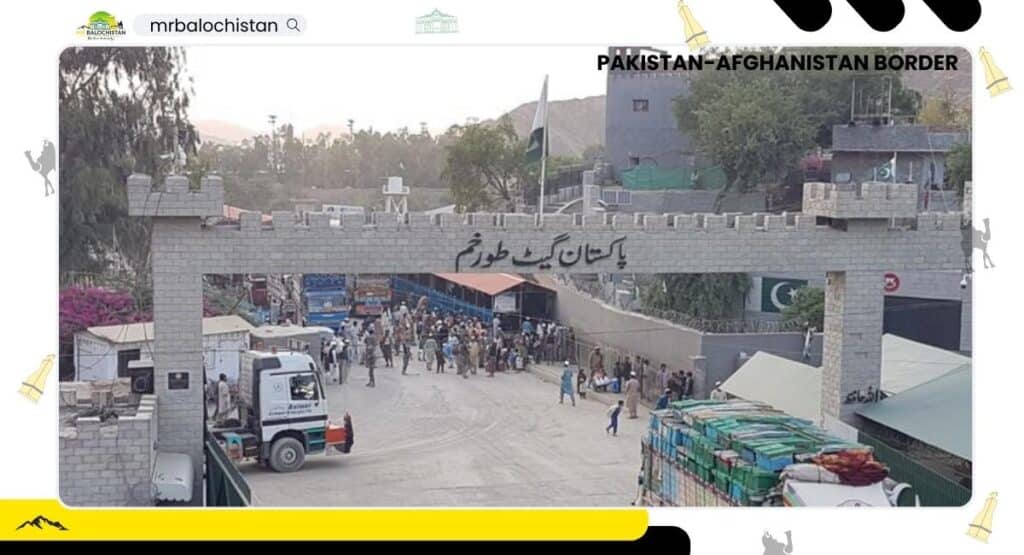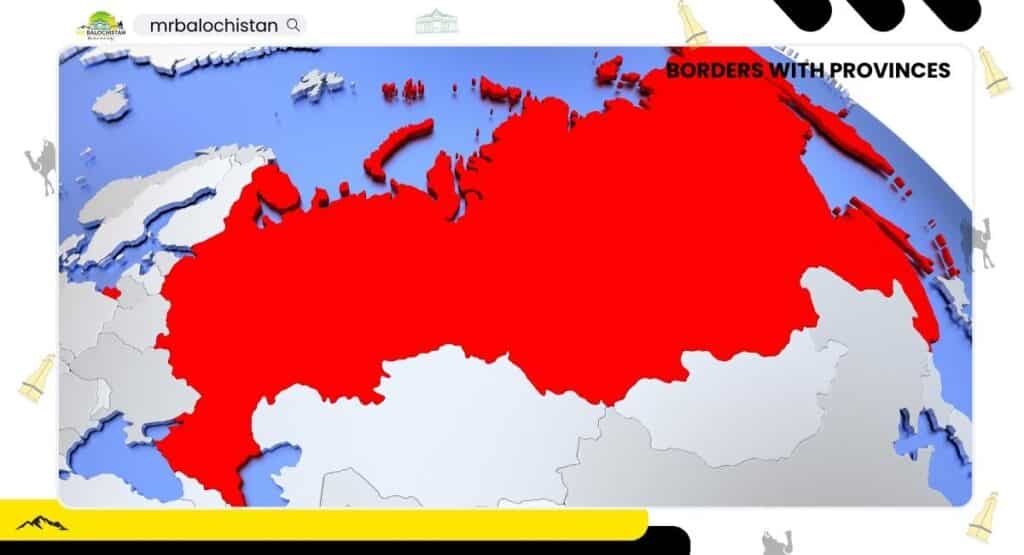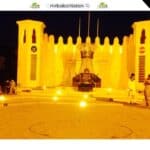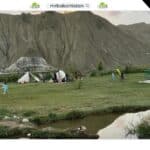Balochistan, Pakistan’s largest province by area, shares its borders with Iran to the west, Afghanistan and the Khyber Pakhtunkhwa (FATA) to the north and northeast, and Sindh and the Arabian Sea to the south. This strategic location makes it a crucial crossroads for trade and geopolitics in the region.
Here’s a brief overview of Balochistan’s borders in each of these countries:
Table of Contents
Pakistan-Iran border – Borders of Balochistan

The border between Iran and Pakistan’s Balochistan is known as the Iran-Pakistan border or the Pakistan-Iran border. It runs for approximately 909 km (565 miles) along the southwestern part of Pakistan and the southeastern part of Iran.
This border is characterized by rugged terrain, including mountains and deserts, and it has been a historically significant region for trade and cultural exchange. The Baloch people, an ethnic group with a distinct language and culture, inhabit areas on both sides of the Iran-Pakistan border.
Pakistan-Afghanistan Border, Borders of Balochistan

The border between Pakistan and Afghanistan is known as the Durand Line. It is a border that spans approximately 2,670 kilometers (1,660 miles) in length, running through rugged and mountainous terrain in South Asia. The Durand Line was established in the late 19th century when Afghanistan was under British influence and later became a part of Pakistan’s border after its independence in 1947.
The Pakistan-Afghanistan border holds significant importance regarding trade for both countries and the wider region.
Gateway for Trade
The border serves as a critical gateway for trade between South Asia and Central Asia. It provides landlocked Afghanistan with access to the Arabian Sea through Pakistan’s ports, such as Karachi and Gwadar, facilitating international trade.
Trade Corridor
The border region is a part of the historic Silk Road trade route. It connects Afghanistan to major markets in Pakistan and beyond, allowing the movement of goods, including agricultural products, minerals, textiles, and machinery.
Balochistan Borders with the other provinces of Pakistan

The largest portion of Balochistan is within Pakistan. It is Pakistan’s largest province in terms of land area. shares its borders with several other provinces and regions within the country. Here’s a more detailed overview of the provincial borders of Balochistan:
Sindh
To the southeast, Balochistan shares a border with the province of Sindh. This border is characterized by a mix of arid plains and hilly terrain. It spans a considerable distance and plays a significant role in connecting the two provinces both geographically and economically. Historically, these regions have had cultural and economic exchanges.
Punjab
Balochistan’s northeastern border touches the province of Punjab. The border between Balochistan and Punjab traverses mountainous areas and includes parts of the Sulaiman Range. This border area is notable for its scenic landscapes and serves as a natural boundary between the two provinces.
Khyber Pakhtunkhwa (KP)
To the northeast, Balochistan shares a border with the province of Khyber Pakhtunkhwa (formerly known as the North-West Frontier Province). The border between Balochistan and KP follows mountainous terrain in the north, including parts of the Sulaiman and Toba Kakar Ranges. This region has cultural and historical significance as well, with diverse ethnic groups residing in both provinces.
Federally Administered Tribal Areas (FATA)
Historically, Balochistan also shared a border with the Federally Administered Tribal Areas, which were part of Pakistan’s tribal belt. However, FATA has been merged into Khyber Pakhtunkhwa as part of administrative reforms. This merger has brought changes to the administrative structure in the border region, aligning it more closely with Khyber Pakhtunkhwa.
Pros and Cons of – Borders of Balochistan
Balochistan Borders: Pros and Cons
Positive Points
Strategic location for trade
Facilitates international trade
Geographical and economic connectivity
Negative Points
Rugged terrain and challenging border conditions
tensions with neighbors
Security concerns and border conflicts
Conclusion
In summary, Balochistan’s borders are not just geographical lines; they are strategic corridors that have shaped the province’s history and continue to influence regional geopolitics. The Pakistan-Afghanistan border, known as the Durand Line, is a critical trade gateway, connecting South Asia to Central Asia and facilitating international commerce. Moreover, Balochistan’s provincial borders with Sindh, Punjab, and Khyber Pakhtunkhwa have historically fostered cultural and economic exchanges, highlighting the province’s role as a bridge between diverse regions within Pakistan. These borders, whether with neighboring countries or fellow provinces, underscore Balochistan’s significance in the broader context of trade and regional connectivity.







